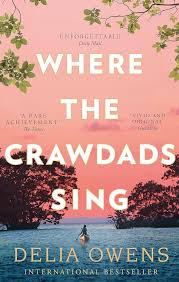43. A Microscope
byA Microscope plays a pivotal role in Chapter 43, set in 1969, where Kya, still recovering from a brutal attack by Chase, finds herself journeying through the marshlands in search of solace. Bruised and swollen from the assault, she is physically marked by the trauma, yet something about the peaceful estuary and the promise of a new discovery draws her in. It is there, amidst the stillness of nature, that she crosses paths with Tate, an old acquaintance who invites her aboard his research vessel to take a closer look at his new microscope. Although Kya is initially hesitant, burdened by both her physical and emotional scars, the allure of exploring the microscopic world stirs something inside her—a longing for knowledge and a chance to momentarily forget her pain.
The encounter between Kya and Tate is tender and rich with symbolism. As Kya gazes through the microscope at the world hidden in the water samples, she is captivated by the “Mardi Gras of costumed players” she observes, a vibrant scene teeming with life. The imagery of microscopic creatures, dressed in their tiny, intricate patterns, evokes a sense of wonder that transcends Kya’s current hardships. Her deep connection to the natural world is palpable, as it has always been a source of beauty and comfort in her life. This moment, spent marveling at the natural world in a way that she never had before, is a metaphor for Kya’s own inner world—broken and bruised, yet still capable of seeing beauty, hope, and potential for growth. Her reaction to the microscope, to the world within the world, is a powerful reminder of her resilience and her thirst for understanding, even in the face of personal trauma.
As the scene unfolds, the complexity of Kya and Tate’s relationship begins to emerge, revealing the tension between the comfort they once shared and the emotional distance that now exists between them. Kya’s cautiousness is evident as she interacts with Tate, the scars from her recent assault still fresh in her mind. While she yearns for the connection they once had, there is an undercurrent of fear and vulnerability that keeps her guarded. Tate, sensitive to Kya’s discomfort, respects her space and refrains from pressing her on personal matters, though he can sense something is amiss. The shared moments of coffee and conversation create a sense of familiarity and ease, offering a glimpse of the old bond between them. Tate encourages Kya to meet with her editor in Greenville and provides practical advice on how to make the journey, a gesture that underscores his support for her work and her growth. Their exchange serves as both a healing experience and a rekindling of their friendship, offering Kya not only emotional comfort but also the opportunity to reconnect with the world of writing and knowledge that she had been avoiding for so long.
As Kya leaves Tate, there is a small but meaningful gesture—she playfully tosses her cap and shares bread for the gulls, signifying the restoration of their rapport. Despite these moments of connection, Kya internally resolves to protect her heart from the possibility of falling for Tate once again. The emotional barriers she has built to shield herself from further pain remain intact, even as she feels the stirrings of affection. Her internal conflict is palpable, as she struggles with her desire for love and the deep fear of vulnerability that has grown from her past traumas. The final scene returns to Kya’s isolation, with her internal struggle between the longing for connection and the protective walls she has built. The fear of encountering Chase again looms large in her mind, a reminder of the violence she has experienced and the trust she has lost. This tension between hope and fear adds complexity to Kya’s emotional journey, as she attempts to balance the delicate process of healing with the reality of living in a world that has too often shown her its darker side.
Throughout this chapter, the vivid descriptions of the marsh and the microscopic world through the lens of Tate’s microscope serve as metaphors for Kya’s life. The marsh, with its intricacies and hidden beauty, reflects Kya’s inner world—one that is both fragile and resilient, scarred but still capable of growth. The chapter expertly balances the trauma of Kya’s past with the possibilities of a future that holds both healing and emotional challenges. Through her encounter with Tate and the discoveries she makes through the microscope, Kya begins to see that there is still potential for hope and connection, even amidst the scars of her past. This delicate dance between vulnerability and resilience encapsulates the themes of growth, self-discovery, and the quiet strength Kya continues to cultivate as she navigates the complexities of her emotions and relationships.


